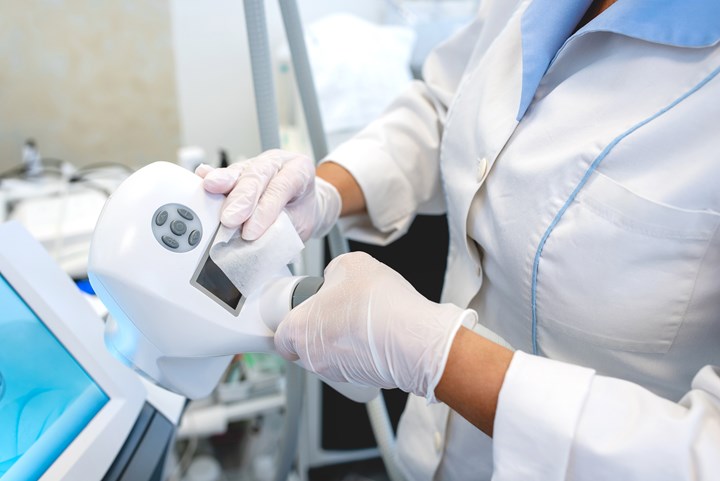New Compounds Prevent Cracking of Medical Devices
Avient’s new Trilliant HC BPA-free compounds boast improved chemical resistance over other flame-retardant thermoplastic healthcare formulations.
Two patent-pending BPA-free healthcare formulations boast improved chemical resistance over traditional flame-retardant thermoplastics used for medical devices, such as FR PC/ABS, FR PC/PET and FR copolyester. Trilliant HC8910 and HC8920 healthcare grades, the latest addition to the Trilliant Healthcare Thermoplastics portfolio from Avient, Avon Lake, Ohio, were developed in response to today’s intense disinfecting protocols.

Using a method adapted from ASTM D543 for ESCR (environmental stress cracking resistance), results versus alternative FR materials demonstrate superior mechanical and aesthetic property retention, and prevention of cracks and crazing after exposure to leading healthcare disinfectants such as Virex Tb, CaviCide, Vesphene IIse, and Super Sani-Cloth.
Said Matthew Mitchell, global marketing director of Avient’s,Specialty Engineered Materials,“Heightened disinfection requires materials that retain mechanical and physical performance in the face of these effective, but harsh, chemistries. By offering more robust solutions, we’re enabling healthcare OEMs to deliver more durable medical devices and equipment that resist chemical attack and serve patients longer.”
Like other materials in the Trilliant HC family, the two new grades are formulated without BPA and are available in both natural and custom colors. Trilliant HC8910 and HC8920 series of materials are now globally available. The HC8920 grades are formulated to meet certification to UL94 5VA at 3.0 mm, V-0 at 1.5 mm, V-1 at 0.75 mm. As these formulations are patent-pending, Avient has not disclosed what materials they are based on. Other Trilliant HC healthcare formulations include those based on ABS, nylons 66 and 12, PEEK, polyacetal and Eastman’s Tritan TPC.
Related Content
-
Tracing the History of Polymeric Materials, Part 26: High-Performance Thermoplastics
The majority of the polymers that today we rely on for outstanding performance — such as polysulfone, polyethersulfone, polyphenylsulfone and PPS — were introduced in the period between 1965 and 1985. Here’s how they entered your toolbox of engineering of materials.
-
Prices for All Volume Resins Head Down at End of 2023
Flat-to-downward trajectory for at least this month.
-
The Fantasy and Reality of Raw Material Shelf Life: Part 1
Is a two-year-old hygroscopic resin kept in its original packaging still useful? Let’s try to answer that question and clear up some misconceptions.












